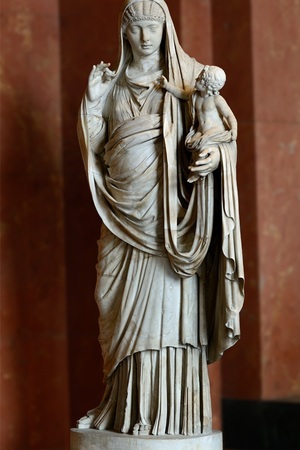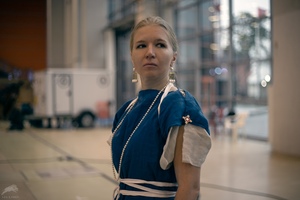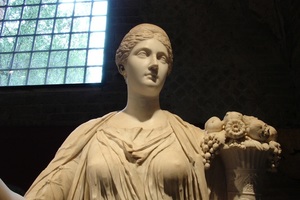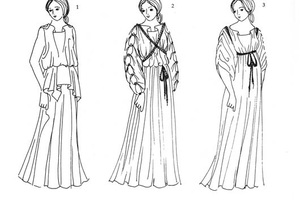Stola
The Stola (Ancient Greek: στολή; stola) is a type of ancient Roman woman's tunic worn by matrons over an inner tunic (tunica interior). The inner tunic was worn over the body and reached down to the ankles. Since it was worn by matrons, the stola symbolized lawful marriage. The term "femina stolata," meaning an honorable married Roman woman, was also derived from this word. The word "stola" itself comes from the Greek language (στολή) and originally referred to any clothing, be it women's or men's.
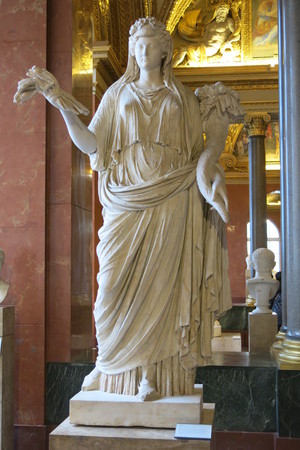 Statue of Livia, wife of the Emperor Augustus, in the image of Ops with a stola. Louvre Museum, Paris, France. 58 BC-29 AD
Statue of Livia, wife of the Emperor Augustus, in the image of Ops with a stola. Louvre Museum, Paris, France. 58 BC-29 AD The bottom of the stola could be richly decorated with embroidery. Sometimes the fabric at the top could be folded in the manner of a peplos, but more often the edges of the fabric were fastened at the shoulders with fibulae or buttons, a row of which could reach the elbows. The stola, unlike the inner tunic, did not have sleeves. It was belted significantly above the waist, creating a series of folds.
Under Emperor Tiberius (42—37 years), the stola began to go out of fashion.
Related topics
Tunic, Matron, Fibula, Woman in Ancient Rome
Literature
Maly entsiklopedicheskiy slovar ' Brockhauz i Efrona [Small Encyclopedia of Brockhauz and Efron : in 4 volumes.

 Gallery
Gallery






